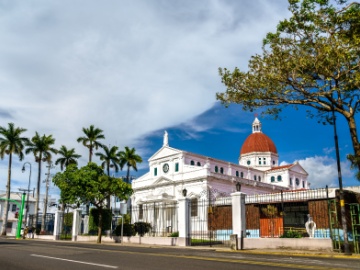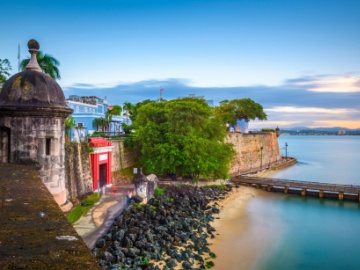
Juneteenth, or the nineteenth of June, marks the day in 1865 when enslaved African Americans in Galveston, Texas, were informed of their freedom, more than two years after the Emancipation Proclamation had been signed. African American history is not a separate narrative from American history, it is central to it. From building the foundations of the nation to leading the Civil Rights Movement, African Americans have shaped the culture, economy, and identity of the United States in profound ways.
You can find the facts in books and archives, but for far too long, many original stories have been overlooked or marginalized. That is why visiting African American heritage sites is important, it offers a tangible connection to the past. These sites bring history to life and help us appreciate the depth of Black contributions to American society.
Boston African American National Historic Site
The Boston African American National Historic Site is a vital landmark, preserving the legacy of African Americans in 19th-century Boston. Established on October 10, 1980, it honors the Black community of the Beacon Hill neighborhood, which became a hub for abolitionists and early civil rights advocates. Long before the national Civil Rights Movement, these leaders laid the groundwork for justice and equality.
Visitors can explore the Black Heritage Trail, which winds through historic homes, schools, churches, and meeting halls. A highlight is the African Meeting House, the oldest extant Black church in the United States, where the community once gathered to organize, worship, and demand change.
The National Museum of African American History and Culture
The National Museum of African American History and Culture in Washington, D.C., opened in 2016 as the latest addition to the Smithsonian Institution. Built to preserve and present the rich heritage of Black Americans, it honors their struggles, triumphs, and cultural contributions.
The museum’s narrative begins in the lower levels, where visitors confront the brutal and tragic reality of slavery and segregation. As visitors move upward, they experience stories of resistance, perseverance, and achievement, culminating in celebrations of music, sports, art, and everyday life that reflect the vibrancy of African American culture.
DuSable Black History Museum and Education Center
Founded in 1961 by Dr. Margaret Taylor Burroughs and her husband Charles, the DuSable Black History Museum in Chicago is the oldest independent African American history museum in the United States. With over 15,000 artifacts, it offers an immersive exploration of Black history, from the Great Migration to the civil rights era and beyond.
Through dynamic exhibits, educational programming, and community events, DuSable fosters understanding of Black heritage and the ongoing fight for justice. The museum also presents literature, art, and reflective spaces that highlight the richness of African American experiences.
Mount Zion Baptist Church
Located in Tulsa, Oklahoma, Mount Zion Baptist Church has long been a source of strength and faith for the local Black community. Founded in 1909 by Reverend Sandy Lyons and a dedicated group of community members, it grew from a one-room schoolhouse into a sanctuary of learning and resilience.
On June 1, 1921, the church was tragically destroyed during the Tulsa Race Massacre, a devastating attack on the thriving Black community of Greenwood. Despite the loss, Mount Zion was rebuilt and today stands as a symbol of resistance, perseverance, and community restoration.
The National Museum of African American Music
Opened in January 2021 in Nashville, the National Museum of African American Music (NMAAM) is the only museum in the world dedicated to preserving and celebrating the legacy of African American music. With more than 1,500 artifacts and seven interactive galleries, it traces the evolution of music genres from gospel and blues to jazz, hip-hop, and R&B.
The Roots Theater introduces visitors to the powerful story of Black music in America, while exhibits spotlight artists like the Fisk Jubilee Singers, Jimi Hendrix, and Ray Charles. NMAAM captures the spirit of innovation, artistry, and cultural expression that defines African American musical heritage.
Explore Related Stories
Disclaimer: Travelopick.com is a self-reliant online travel agency and not associated with any third party. By accessing and using Travelopick.com website you agree that Travelopick.com is not liable for any direct or indirect loss, however arising, from the use of any of the information, offers, materials or links to other sites found on this website. If you have any queries you can call us at our Toll Free Number +1-254-638-0057 or simply email us at [email protected]








